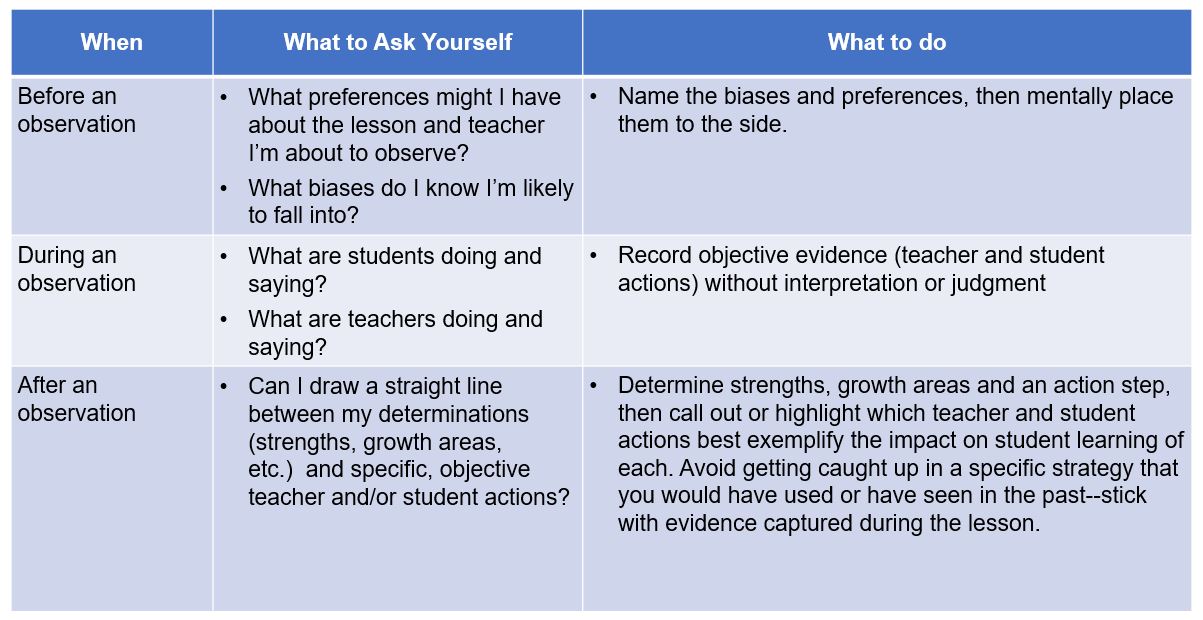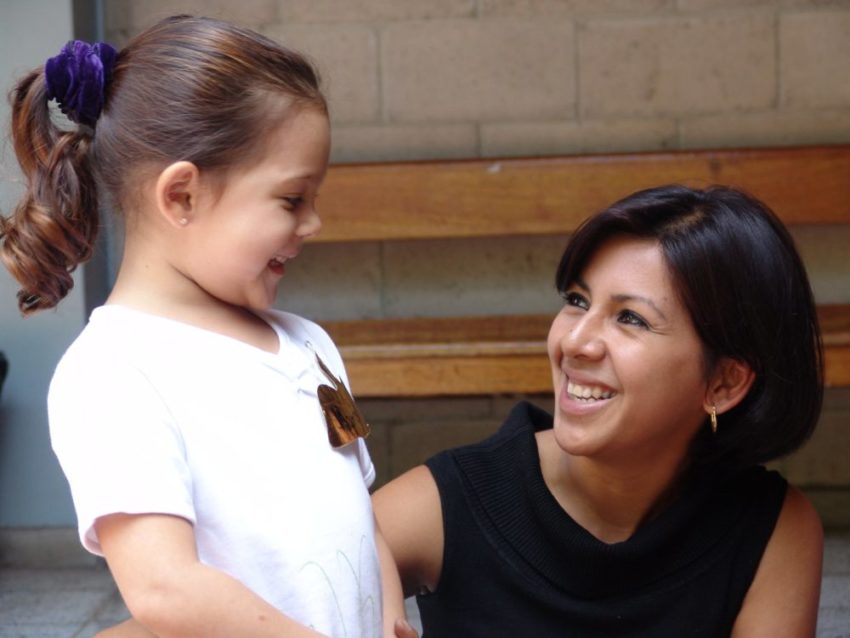Posts Tagged ‘Teachers’
Celebrating Teacher Appreciation Week 2020
Early May is one of our favorite times of the year. The weather warms, flowers bloom, and teachers are celebrated for an entire week! While we think teachers (and leaders) should be recognized everyday for their tremendous work, Teacher Appreciation Week, this year from May 4 – May 8, is a nice formal opportunity to say thank you.
Though we are teaching, learning, and working virtually, here are 7 ideas for celebrating teachers:
- Send a personal note. More than ever, teachers are inundated with emails and texts. A personal note – sent via the old fashioned, but dependable USPS – can go far for anyone, including your teachers.
- Give a gift. Sometimes, someone taking care of the dinner that night is all you need to make it peacefully to tomorrow. Gift cards, meals from local restaurants, and gift certificates to local businesses are always appreciated. Even a small plant left on the teacher’s doorstep to “decorate their home office” is a meaningful way to say thanks.
- Give time. For leaders, consider cancelling a regular staff meeting and encouraging teachers to use the “found time” to do something for themselves.
- Get families to engage. Ask families to record a short video clip, write notes of appreciation or text pictures of homemade thank you cards.
- Party in a box. Put together a small package of party supplies–balloons, sunglasses, streamers, candy, and a small gift or two–and mail it to each teacher with a label on the outside directing them not to open until a certain date and time. During a staff meeting, have everyone open their boxes simultaneously and start the party!
- Opportunities for input. For some, the greatest recognition is the opportunity to be heard and enhance their impact. Think of ways to bring teachers into decisions–about curriculum, schedules, virtual learning and more.
- Shout-outs. While you may not be physically together, shouting out teachers in meetings, emails, and on social media/websites is a simple, but effective method for letting folks know you value and appreciate them, and a great way to highlight the values you most want your team to exemplify.
Three Steps to Avoid Common Observation Biases
We all have biases. Whether picking an ice cream flavor or choosing to take the scenic route rather than the highway, we all operate with mental models that place disproportionate weight on certain factors that move our judgment in favor of one option when compared to another.
When observing and evaluating teacher practice, there are numerous opportunities for biases to creep in. Just think of all the factors that go into a lesson: the subject, grade, school, teacher, time of day, lesson structure, materials used and more. An observer may think to themselves, “the students were well-behaved for the first class right after lunch”. A different person observing that same lesson may think, “if I was teaching this class, I would have used a different text.” Both of these sentiments may be true, but they have to be placed aside before conducting a visit so that observers can focus on objective teacher and student actions.
In short, great observers, coaches, and evaluators must identify, then set aside, biases in order to fairly and accurately evaluate and develop teacher practice.
Common biases include:
- Confirmation bias: the tendency to search for or interpret information in a way that confirms one’s preconceptions,
- Halo effect: the tendency for a person’s positive or negative traits to “spill over” from one area of their personality to another in others’ perceptions of them, and
- Mirror bias: the tendency to judge performance as “good” if it is “like I would have done it.
A full table of common observer biases with examples can be found here: Observer Bias Examples
In order to mitigate the impact of these biases, great observers should ask themselves three questions:

Round 3: Looking Back, Looking Ahead
In our previous two posts (here and here), Sarah and Grant shared reflections on the past year and projects they are looking forward to in the coming months. To bring us home, Jessica shares lessons learned on working through complexity and opportunities to lead with appreciation.
What I learned: I have spent most of my career in education supporting and working in large bureaucracies, namely large urban districts and state education agencies. Just prior to joining Hendy Avenue I was in senior leadership in one of the largest school districts in Ohio. Each of the organizations I’ve worked with in the past have faced challenges, and I tended to chalk those up to organizational complexity, and the difficulty that comes with arriving at solutions when you must invest a large number of people and perspectives in the strategies. After spending my first year with Hendy working with diverse organizations and districts, I came to appreciate that the challenges I faced in past contexts are not so different from those faced by clients of all sizes. I’ve learned that it’s often not only the scale and bureaucracy that causes the challenges we face in K-12 education, and that we can learn a lot from organizations of different sizes and types in finding solutions. As we partner with our clients this year, we are excited to continue to bring lessons learned from all shapes and sizes of districts, states, schools and networks to arrive at solutions to problems.
What I’m excited about: I am so happy to get to continue to partner with Independence Mission Schools in Philadelphia. Having attended Catholic schools as a child, I have a great appreciation and admiration for the work IMS is doing for some of Philadelphia’s most deserving students. We learned a lot from IMS’ leaders and teachers as we supported them last fall to implement their new instructional framework, and to modify that framework to fit their Catholic culture. Now, I’m excited to continue to support IMS leaders as they deeply invest in teachers through teacher leadership. This project has been a welcome opportunity to explore how others are solving a problem, learn more about the context, strengths and opportunities in IMS schools, and devise a program that makes a difference for teachers, and students, across the network.
Round 2: Looking Back, Looking Ahead
In our last post, Looking Back, Looking Ahead: Lessons Learned and What’s to Come in 2018-19, our founder Sarah shared insights on the difficulty of leading change and the excitement around re-engaging with one of our first partners.
This week, we hear from Grant:
What I learned: Historian and philosopher Will Durant said, “we are what we repeatedly do. Excellence, then, is not an act, but a habit.” Durant’s much-quoted line rings true in most endeavors, especially in efforts to drive change. Over the past year, we’ve seen the power of habitual communication–to teachers, school leaders, regional administrators–in sharing consistent messages, building shared understanding and demonstrating competence. Nothing derails stakeholder buy-in more than mixed messages or a lack of information! Habitual communication requires consistent content, format, and tone through a single channel at a regular, expected frequency. In Houston, we’ve supported KIPP in the development of a weekly message to School Leaders around implementation of Teacher Pathways. Each Friday, leaders know they will receive updates, shout outs, resources, and reminders to guide the week ahead. In Delaware, we’ve launched a monthly newsletter for district leaders on DPAS_II, the state’s teacher evaluation system, with a consistent agenda including deadlines and professional development opportunities. These habitual communications do more than provide information, they demonstrate competence and care for colleagues and trust between stakeholders. As you think about the programs you’re leading, consider how you can habitualize communication as a repeatedly do.
What I’m excited about: In 2014, KIPP Texas – Austin began a comprehensive effort to reshape teacher effectiveness and retention through the development of a Teacher Career Pathway. Knowing that great teachers drive student achievement, Austin’s Teacher Career Pathway develops, recognizes and rewards excellent educators so they will get better and stay longer. This fall, the first cohort of Distinguished Teachers will be announced; a group of accomplished educators who have demonstrated consistent gap-closing results for kids, impeccable teaching practice and exemplary professional contributions to the school community. We cannot wait to celebrate these remarkable educators!
Looking Back, Looking Ahead: Lessons learned and what’s to come in 2018-2019
As consultants, our role is to guide our partners to make informed decisions and to successfully meet their goals. We also prioritize building the knowledge and skills of our partners and they tell us that they learn a lot from working alongside us. In turn, we learn so much every day from the incredibly smart and diverse partners we have the good fortune to work with!
As we reflect on the past and look ahead to the new school year, we are grateful for all that we have learned from our clients. In our next couple of blog posts, each Hendy team member will share something he or she has learned and something we’re excited about it. It’s going to be a great year!
To kick us off, read below from our founder, Sarah Rosskamm:
What I learned: Change is hard. Often times the solution is to prepare for change, engage stakeholders, continuously communicate the “why”, work with influencers, plan for challenges and ultimately to just keep going even when it gets tough. There are times, however, when the solution is to pause, reflect and change course. In working with one of our partner charter networks this year, we learned that sometimes the most courageous and best answer is to stop doing something. In this case, our partner was eager to build a teacher career pathway. They took many important steps to get there, had buy-in from leaders and momentum from teachers believing it was valuable. However, they also had budget changes, shifts in capacity and new demands of their attention. As a result, they smartly decided to pause. They stopped putting their attention into the pathway and instead narrowed the scope of their focus to implementing a highly effective evaluation and development structure that would help their teachers to grow and enable them to target their professional learning activities. They focused on laying a foundation that would immediately benefit teachers through continued growth, and will ultimately allow them to move more quickly toward a pathway if and when they choose to pick it up again. It wasn’t easy (for the network or for the Hendy team) to not complete our original shared goal, but it was the right thing to do for their teachers and students.
What I’m excited about: Hendy Avenue’s very first consulting project was supporting the Delaware Department of Education as they considered revisions to their teacher evaluation rubric. After considering several rubric options based on the best of the available rubrics at the time, the Delaware team, similar to the team described above, decided to pause and learn more before making changes to a statewide tool. So, we shifted course and supported four charter schools in Wilmington to design and implement an alternative evaluation system for their teachers that would utilize this new rubric. I worked closely with the leaders in those schools for several years and together we instituted an alternative system that is now used in a growing number of Delaware schools through their Alternative Evaluation system. I am so excited that five years later, after learning a great deal about the use of the current rubric and about the alternative system, Delaware leadership is eagerly partnering with teachers, leaders and other stakeholders to revise the rubric to ensure the tool is well-aligned to new standards and meets the needs of teachers across the state. I’m also thrilled the state has very wisely decided to prioritize involvement of teachers and leaders in the process and to take the time necessary to ensure it’s a positive and welcomed change for their well deserving teachers. And I’m even more excited that Hendy Avenue will be partners in engaging stakeholders, designing, piloting, revising and ultimately building a rubric that helps teachers and leaders be the very best they can be for their students.
Make Your Pick: How the NFL Draft Applies to Teacher Hiring
While there is a lot of best practice research out there about how to hire a great team, leaders seeking teacher talent can take a cue from how professional sports teams scope out and draft players. In the post below, we bring Cade Massey’s article on 5 lessons we can learn from the NFL draft into the world of teacher hiring.
1. Know what you need. Before you even begin to recruit teachers, be clear on what type of teacher you need for your school. Of course, certification, grade and subject-area matches matter, but identifying a great fit requires more. Assess your current staff to identify where your team has strengths, and where there are gaps. Perhaps you need a teacher with great data skills who can support your team’s efforts to review and act on student outcomes. Or perhaps you need a teacher who can effectively implement writing across the curriculum. Also consider your strengths as a leader; do you have capacity to coach a novice teacher? Or do you need someone with more experience? Being clear about the ideal profile of a candidate can help ensure that you focus your limited resources on a hiring process that will yield the best outcome.
2. Get input from others. While the school leader is often the driver and decision-maker when it comes to hiring, ensuring that teachers, other leaders, and even parents are engaged in selection will help ensure that the best candidate is chosen for the school. Consider a process that allows you to solicit input and ideas from a variety of stakeholders. Allow each stakeholder to have an independent review of finalists, and to form their own perspective about fit. One easy way to engage multiple stakeholders quickly is to use a panel interview, or to have multiple stakeholders act as students in a demo lesson (see item 3).
3. Understand the candidate from multiple angles. Resume reviews and interviews are a great first step in getting to know a teacher candidate. But, often that isn’t enough. As football scouts actually see candidates play, getting a glimpse of your top candidates teaching will help you understand how they may fit into your school culture. Request a video of the candidate teaching, or request that they teach a demo lesson in your school or with your selection committee. Even observing 10 minutes of teaching can help you get a full picture of the candidate’s skills and growth areas.
4. Be consistent in your selection model. Hiring is about assessing people, which can be a messy business. No matter how disciplined we are, our opinions of others are naturally informed by the biases we carry; we’re all human after all. As you design your selection approach, consider a rubric and scoring mechanism that makes considering multiple variables factors more formulaic. Bringing order and data to a process like hiring can help ensure that factors like selection bias do not play a significant role in who is selected for your school.
5. Keep score and reevaluate. The only way to know if your selection process worked is to map it against results. Once you’ve selected your dream candidate(s), keep a record of the selection process and the factors that led to their hire. Then, after their first year, compare the teacher’s results to your selection. How accurate was your assessment of their strengths and growth areas? Did your selection approach yield a candidate that made gains with students? If so, what should you replicate? If not, what might you tweak for future hiring?
Sound off in the comments: What lessons have you learned from teacher hiring? What strategies have been most useful in identifying your best candidates?
Teacher Leadership: More than a Buzzword
The education field loves jargon. From “21st-century learning” to “college and career readiness”, new jargon enters our vocabulary as priorities and policies shift. Recently, we’ve heard one buzzword repeatedly swirling across blogs and conferences: Teacher Leadership.
What is teacher leadership?
In What do we know about teacher leadership?, Jennifer York-Barr and Karen Duke from the University of Minnesota reviewed two decades of literature and define teacher leadership as “the process by which teachers, individually or collectively, influence their colleagues, principals, and other members of the school community to improve teaching and learning practices with the aim of increased student learning and achievement”
A few key ideas about teacher leadership stand out:
- It is a process, not just a position. Anyone, at any level of an organization, can demonstrate leadership. Formal roles can be helpful, but are not the end goal.
- It is about influence beyond the self—whether that be on peers, managers, subordinates, etc.
- It is ultimately about increased student learning and achievement.
Why teacher leadership?
Leading Educators put it best: “When administrators and teachers share leadership, teachers’ working relationships are stronger, student achievement is higher, and highly effective teachers can be retained in the schools that need them. Highly effective teachers can have substantial spillover effects on their peers’ performance.”

Much like a lesson or unit plan, teams should start with the end in mind: identify the specific rationale behind investments in opportunities for teacher leadership. School systems may pursue teacher leadership to:
- Further develop top teacher talent
- Help other teachers improve
- More effectively implement key priorities (e.g., curricula, standards)
- Build a pipeline to the principalship
- Distribute leadership within schools and make principals’ span of supervision manageable
- Increase highly effective teachers’ impact on student learning
- Increase teacher retention by investing in them and their ideas
Once a school, district, or network identifies why they want to invest in teacher leadership–including specific measurable goals–it becomes critical to design initiatives that will maximize that investment.
Intrigued? In our next post, we will share best practices for successfully launching teacher leadership initiatives. Hungry for more? Check out The Network Effect from Chiefs for Change and Public Impact’s Opportunity Culture.
Thank You Teachers!
As we look forward to celebrating Thanksgiving with our families this week, the Hendy Avenue team is reflecting on the many blessings for which we are thankful. We are thankful for our family and friends. We are thankful for the opportunity to partner with wonderful organizations doing incredible work for children. We are thankful for clients who have become friends. We are thankful to work with our fabulous Hendy team members who make us think harder and laugh more.
We are also thankful for the many people in our lives who have helped us along the way. Today we give thanks for the teachers who have shaped our lives and highlight just a few of them.
Sarah: My favorite teacher was Mrs. Ayers, my elementary art teacher. She had an energy and passion for her subject that was contagious and I fell hard for creating art. She brought a talent out of me and made me feel truly special. I think the best teachers are able to connect with their students and bring out a curiosity and a confidence that translates to other parts of their lives. Thank you, Mrs. Ayers!
Jess: My favorite teacher was Mr. Hoffman, my high school English teacher. I was a math and science geek in high school, and never really valued literature. I thought that spending all of my time in the analytical world of experiments and functions would get me to my goals. Mr. Hoffman helped me to understand and appreciate the value of balance in academics and in life. We read the great novels in a way that helped me to build my critical thinking skills in a different way. Thank you, Mr. Hoffman!
Grant: I have to give a Thanksgiving shout out to my AP US History teacher, Mr. Corcoran. The one word that comes to mind when I think back to Mr. C’s class is rigor. Not only was the course demanding in terms of workload, but it was a intellectually exhausting and exhilarating experience, every day. You had to show up prepared, engage with your peers, argue your points, and justify your thinking. Nothing less than our best was accepted. Thank you Mr. Corcoran for pushing me to demand excellence of myself and forging how to think, write, and speak with integrity.







